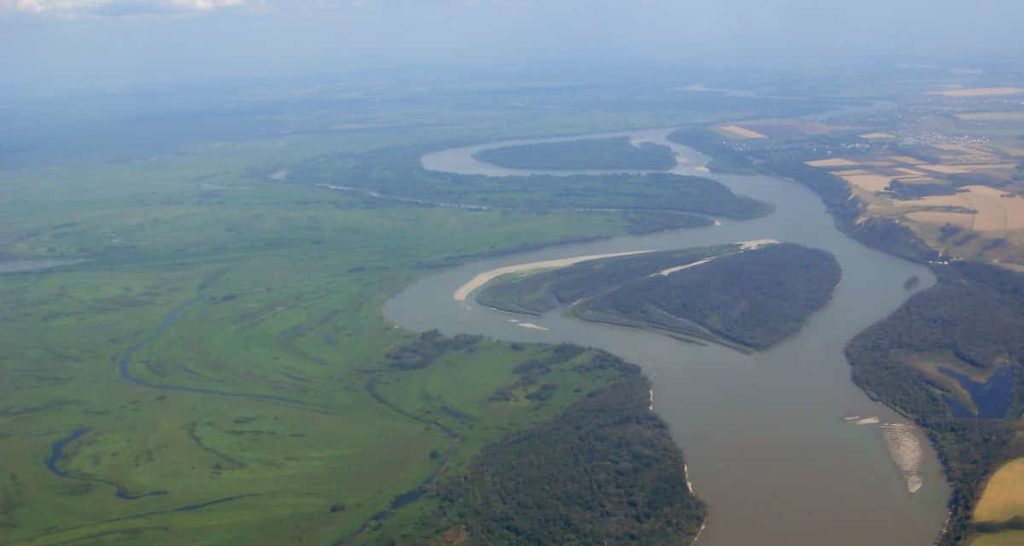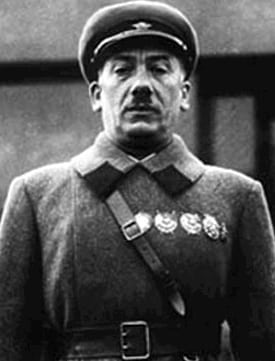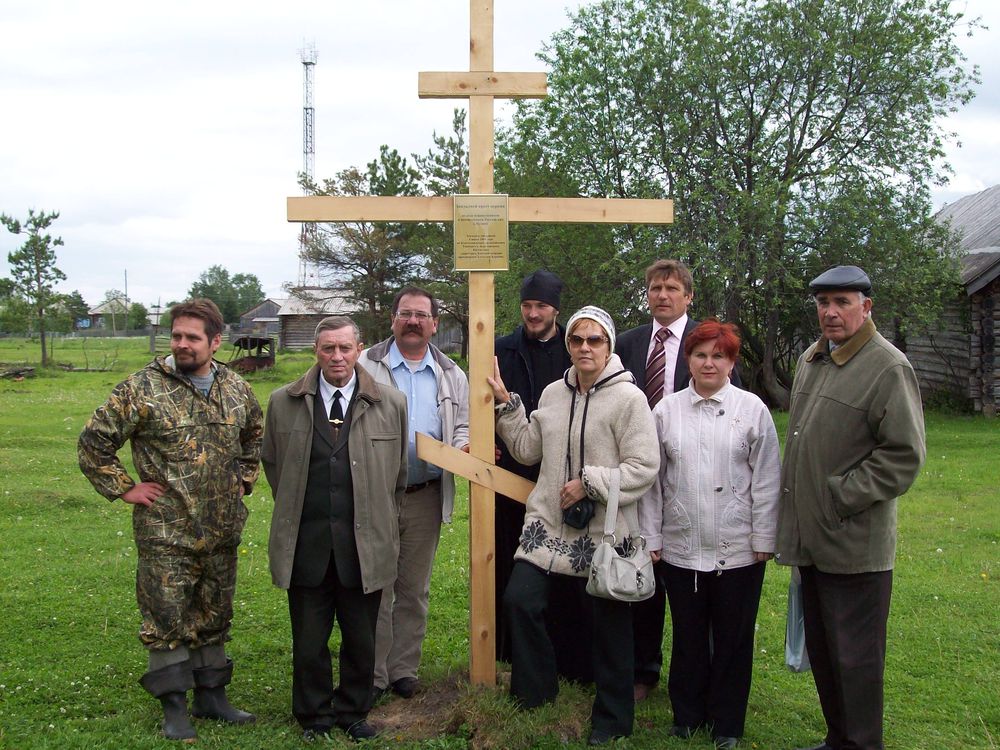There’s a forgotten island in the middle of the Ob River in Siberia called Nazino or Nazinsky Island, after the nearest village.
Those who live today may know it by another, secret name. You won’t find this name on Google or Apple Maps.
Seventy years ago, terrible things happened on this island surrounded by icy waters. These things were covered up and kept hidden from the general public for decades. These horrors gave it the modern nickname of Cannibal Island.
The 600-meter wide island, Navino, Nazinsky, or Cannibal Island, spent the better part of human history in total obscurity. Then, out of nowhere, in 1933, the Soviet government chose it as the location of a new and innovative type of Gulag.
It would be an agricultural prison where the prisoners worked the land for the glory of the USSR.
Unfortunately, the 6,000 political prisoners soon found themselves not in a pastoral utopia but a nightmare of starvation, where cannibalism was the only gruesome way to survive.
A Prelude to Terror on Nazinsky Island
On a Spring night in 1933, Feofila Bylina’s parents received a visitor.
This woman walked with painful, erratic movements, her legs draped in filthy rags.
She said she was forty years old, which surprised Feofila and her parents. The woman looked almost twice that age. This night was likely the first time they’d seen a political prisoner.
Feofila and her family were native Siberians known as Ostyaks at the time. A tiny hamlet on the north bank of the Ob River called Nazino was their home.
Nazino was a secluded place easily overlooked in Russia’s massive wilderness.
Recently, though, they’d started to notice the outside world intruding. First, the boats kept pulling up at the nameless island along the river.
Screams and gunshots were common in the middle of the night, and now this strange woman brought by guards came to rest in her home.
They took her to a backroom and carefully removed the rags covering her legs by candlelight. What Feofila saw next would sit with her for the rest of her life.
All of the meat on her calves had been cut off and eaten on what the women called the “Island of Death.”
She had come from a new Gulag on the Ob River that was becoming one of the worst atrocities committed by Stalin’s Soviet Union.
Nazinsky Island’s story didn’t start with Feofila and this woman on that cold night in 1933. Instead, it originated years before in a place thousands of miles away.
How Did Soviet Policy Lead To Cannibal Island?
In the winter of 1929, it had been five years since Vladimir Lenin died and a year since Leon Trotsky was forced into exile.
Stalin consolidated power and was ready to leave his mark on Soviet Russia. With the flick of a pen, he opened up the door to one of Russia’s bloodiest chapters.
He called it “Collectivization.”
Under Collectivization, peasants in Ukraine give up their smallholdings and go work on Soviet collective farms.
This was Stalin’s carrot. The stick was Dekulakization, a euphemism for liquidating the kulaks.
Theoretically, Kulaks were wealthier peasants, though, in practice, Kulaks were any peasant who disagreed with Collectivization, which many people did.
In protest, Ukrainian peasants destroyed their tools, slaughtered animals, and burned their farms rather than give them to the Soviets.
In response, Stalin ordered many people shot, and others rounded up and placed in Gulags.
As a result, Ukraine and parts of Russia were in the middle of The Holodomor, a massive famine. Millions were starving, and the Gulags were overflowing.
The USSR was facing a crisis of massive proportions. What they needed was a self-sustaining way to feed and house the victims of Dekulakization.
Along came Genrikh Yagoda, with the idea that it would end up with thousands of people eating each other on Cannibal Island.

Creating The Nazinsky Island Gulag
Genrikh Yagoda is most well known as the head of the NKVD, who oversaw the trials of old-school Bolsheviks Grigory Zinoviev and Lev Kamenev during The Great Purge. He eventually became a victim of Stalin himself and was executed in 1937.
In 1933, he was part of a team overseeing Collectivization tasked with making Stalin’s decrees somehow work without starving everyone to death.
Yagoda came up with an ingenious solution. The USSR needed to both set up collective farms while also punishing Kulaks. His solution was to condemn Kulaks to work on collective farms instead of placing them in Gulags.

Yagoda planned to “resettle” 2 million dissidents in Siberia, give them tools, and make them build self-sustaining farms.
All these new farms would solve the Collectivization famine, while the miserable Siberian weather would be the perfect punishment.
Yagoda was so pleased with his idea that he started implementing it even before Stalin agreed, sending out quotas for police forces to arrest Kulaks.
This point is when things got messy. In Stalin’s police, failing to fulfill your arrest quota meant becoming part of someone else’s.
The police would find dissidents where none existed, particularly in urban areas where they could find those who failed the internal passport regime.
A hated feature of Tsarist Russia, internal passports had been ditched by the Bolsheviks after they gained power until Stalin had revived the system the previous December.
Distributed only to those doing useful work, internal passports effectively made you a legal citizen. Fail to carry one, and you were automatically a criminal. In the cities, there were always enough people without passports to fulfill police quotas.
Kuzma Salnikov, for example, was a married miner from Novokuznetsk and a passionate Communist. Then one day, he happened to go to a market without his internal passport just as the police sealed off the building.
He was deported from his home city without even a chance to inform his wife. He never saw their two kids again.
Awful as Salnikov’s story is, it’s just one of many.
There was a 12-year-old girl left on a station platform for ten minutes while her mother went to buy bread.
When the mother returned, her child was gone, abducted by police officers trying to hit their quota.
There was the 103-year-old man who went out on his street for some air. Or the student who was snatched off his aunt’s doorstep in Moscow.
Even a pregnant woman was deported for not carrying her passport, despite having it clutched in her hand the entire time.
All across the USSR, hundreds of thousands disappeared this way.
As their families struggled to find out what was happening, Yagoda’s goons loaded those captured onto trains bound for the wilds of Siberia.
Vagrants, common criminals, political prisoners, kulaks, and ordinary people abducted off the street all became part of an unwilling exodus into Russia’s frozen interior.
The conditions were so bad that scores died en route. Unfortunately, they were the lucky ones.
The survivors didn’t know it, but they were heading to places like Cannibal Island.
Given the immense cruelties it inflicted, you would think that the Soviet system as an infernal machine fine-tuned for repression, but that wasn’t the case.
In Siberia, officials didn’t know about the thousands of prisoners heading their way until the first trains appeared.
When the government unloaded 25,000 prisoners in Tomsk in April 1933, local party bosses had no idea what to do with them.
By May 1933, Tomsk was housing nearly 90,000 prisoners but had yet to receive a copek to care for them. So officials finally decided someone else was going to have to deal with the problem.
They loaded the first 5,000 exiles and 50 guards onto lumber barges and set them off along the Ob River, bound for the new island settlement near Nazino village.
Getting To Nazinsky Island
The ride to Navinsky Island wasn’t pleasant. The village of Nazino was miles away along a river still choked with ice in a part of Siberia ravaged by snowstorms.
By the time the barges reached the future Cannibal Island on May 18, 27 settlers had already died from exposure. The survivors, meanwhile, stepped into a nightmare.
The island was a low-lying swampland some 3km long and barely 600 meters wide. There was no shelter, just trees. The guards expected the settlers to cut down and build huts. Unfortunately for them, the officials in Tomsk had forgotten to give them any tools.
And now here they were, standing on a blanket of snow as night set in, with no way of getting lumber to build a shelter. Left with no choice, the prisoners slept out in the open in the snow.
By the time May 19, 1933, dawned, another 295 were dead.
And so began a fight for survival.
Almost all the unlucky souls sent to Cannibal Island were city dwellers caught without their passports. They had none of the agricultural or survival skills real Kulaks would’ve had. And this would soon become a severe problem.
On the barges, the guards gave prisoners a lump of bread each day to keep them alive. Once they reached the island, the guards could no longer be bothered to turn the flour they brought with them into bread.
Instead, they handed each prisoner 200 grams of flour as sustenance – less food than even prisoners in Auschwitz or Cambodia’s Killing Fields had to live on.
Already desperate, many of the settlers mixed the flour with dirty river water, leading to an outbreak of dysentery.
It was only the second day, and already Cannibal Island was a horror show.
Cannibal Island Devolves Into Chaos
Within four days, the prisoners had already reached new depths of suffering.
The freezing rain killed people nightly, while those who’d managed to build fires would often lay too close and end up burning to death.
On top of that, the guards hadn’t returned to give out more flour since the meager 200 grams everyone received on the first day.
At this stage, the prisoners were still just about clinging to enough of their humanity to organize in protest. They started a riot.
They made enough noise that the guards eventually sailed one of the boats over from the opposite bank to see what was up. Finally, when the prisoners said they wanted food, the guards agreed to restart the flour rations, but not on a person-by-person basis.
Instead, the surviving prisoners would have to self-organize into brigades of 150.
Each brigade would have a leader, and that man would distribute the flour. At this point, the settlers on Cannibal Island lost any chance at solidarity.
Among the settlers was a minority of violent criminals and outright sociopaths.
Seeing the key to their survival, they presented themselves to the guards as brigade leaders. So began the long process of starvation for many on the island.
You may be wondering why people didn’t try to escape. Why didn’t they brave the river and make a break for it?
Many tried, but few succeeded.
Most prisoners who braved the harsh waters of the Ob drowned. The guards shot at those that made it to the bank.
For those who escaped, the well-fed guards hunted through the wilderness for sport.
Things would have been much better if the guards had left the prisoners alone, but their cruelty was legendary.
They would sail over, take a hunk of bread, and hurl it into a crowd, enjoying how the prisoners fought for a scrap of food.
They drank and shot prisoners for fun from the safety of the barges.
Many would trade bread for sex with young prisoners and trade cigarettes for older settlers’ golden teeth.
The Cannibalism Starts
Only one week into arriving, signs of cannibalism began appearing. The camp doctor discovered five prisoners bearing signs of cannibalism.
The news was relayed back to Tomsk, which promptly responded by sending 1,000 more prisoners to the island without any additional food.
By then, stronger prisoners split into gangs that roamed the island, terrorizing the weak. They’d murder for food if they could, but none of this was enough. So eventually, the starving survivors turned towards the bodies covering the island for food.
At first, they made skewers from branches and roasted the dead and half-dead over a campfire. The horror didn’t stop there, though.
There are accounts of a 13-year-old Ostyak girl coming to the island to collect bark who witnessed a female prisoner tied to a tree. People cut off her breasts, calves, and any hefty piece of muscle. She bled to death after the guards discovered her.
Around this time, Feofila Bylina’s parents opened the door to the 40-year-old woman with the missing calves.
The combination of sadism and lack of oversight created something incredibly unique on Cannibal Island. It was a place where even Stalin’s USSR couldn’t ignore the suffering.
The Legacy of Cannibal Island
It only took a month before the Tomsk authorities dissolved the settlement. Surviving prisoners were sent to other collective farms, and the guards returned to Tomsk.
Six thousand seven hundred prisoners lived on the island, but only 2,200 survived. Four thousand five hundred people froze in the elements or suffered violent deaths.
Only months later, the grass had grown so high you would never even know the horrors that occurred on Nazinksy Island.
The only people who knew of the crimes were the guards, prisoners, and the locals in the nearby village. It would have been long forgotten to history if not for the bravery of one man.
Vasily Velichko was a Communist instructor living near the collective farms that stretched along the Ob above Tomsk.
In July 1933, he heard the first rumors of the catastrophe that had befallen the Nazino farm.
Without mentioning it to his superiors, he decided to investigate. Unfortunately, it was a challenging trek, and Velichko didn’t arrive on Cannibal Island until August.
At first, nothing looked out of place. There were tall summer grasses, sparse trees, and a handful of Ostyak people doing their business.
When Velichko stepped onto the island, he found the grasses’ secret – the half-eaten bodies lying out of sight.
Over the next few weeks, Velichko interviewed the Ostyaks, the local villagers, and anyone speaking to him. Then, slowly, he began to build up a picture of what had happened.
That fall, Velichko submitted an 11-page report to Moscow outlining his findings. Velichko was fired from his job and kicked out of the Party, and his report dropped into the black hole of the state archives.
Luckily, a few officials did see the report and decided to do something about it. As a result, a moratorium was placed on the resettlement program, with labor camps instead brought back for dissidents.
In Tomsk, the 50 guards who’d overseen this squalid reign of terror all had their Party memberships revoked and were jailed.
Velichko’s report stayed “lost” in the archives until the collapse of the Soviet Union. Then, it wasn’t uncovered until 1994, and only then after some Ostyaks who’d been alive at the time had started agitating for a memorial to be erected on the island.
Nazinsky Island Mermorial
But, grim as the history of Cannibal Island is, it’s worth remembering that it was just one example in a decade of terror under Stalin.
Simultaneously, the starving prisoners turned to cannibalism at Nazinsky, The Holodomor was sweeping Ukraine and Kazakhstan.
In Ukraine – the most fertile republic in the entire USSR – Stalin set impossible food quotas so high that even where food was grown, it was confiscated and taken to the collective farms.
In the ensuing disaster, somewhere between 3 million and 7 million peasants starved to death. As on the Ob River, there were tales of cannibalism.
Of families forced to kill their weakest child for food to survive. Of children who ate their parents after they died of starvation.
And this was just the beginning. After the horrors of famine, Collectivization, and Dekulakization receded, the Great Purge got underway.

Three-quarters of a million were denounced and killed. Then came the deportations of the Tartars, the internal exiles of dissidents, the expansion of the Gulag system, the doctors’ purge in Moscow… the list of crimes is almost endless.
Cannibal Island may be gruesome, but it’s worth remembering that it’s just one minor event in two decades of suffering unleashed by Stalin.
Suffering still not dealt with properly, even today.
We can find stories like this gruesome, even ghoulish. We can choose to look away, as many did.
But the fact remains that disasters like this have happened in recent history, more often than we want to admit.
It may be an anonymous stretch of swampland in the middle of a remote river. But Cannibal Island should be a place that the world tries its hardest not to forget.
Sources and Additional Reading
Cannibal Island: Death in a Siberian Gulag (Human Rights and Crimes against Humanity)


Thanks for sharing this awesome blog post. I’ll be back to view more.